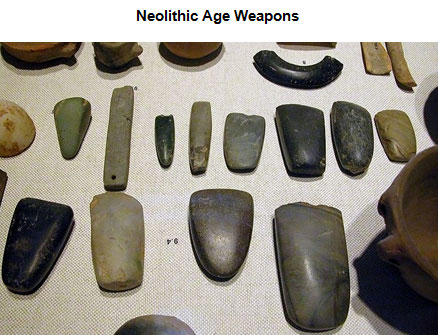
In this section, you will learn about the Neolithic Revolution and determine how it influenced the development of the river valley civilizations. New civilizations emerged between 8000 BC and 500 BC. The Neolithic Revolution, sometimes called the Agricultural Revolution, occurred from 8000 BC to 4000 BC in many places around the world. This period is characterized by the transition of human civilizations from hunting and gathering to agriculture. The transition was not only characterized by the planting of permanent crops but also the domesticating of animals such as sheep, pigs, and goats.
One of the most significant causes of the Neolithic Revolution was the need for a more stable food supply. The nomadic lifestyle of the early civilizations required humans to move with herds of animals in order to hunt for food. These early humans also divided the work between women and men. Men were responsible for hunting the animals, while women were responsible for gathering berries and fruits.
During the Neolithic Age, there were many changes that impacted emerging civilizations. The planting of permanent crops produced a larger food supply. The excess crops caused a growth in population and introduced food as an item for trade.
The way that people lived also differed from nomadic civilizations. People began to build homes and other buildings, which led to the formation of villages and, later, cities. The technology used to construct buildings and other items also changed. Tools and weapons improved during the Neolithic Age. Pictured below are tools, jewelry, and weapons from the era.

A change to an agricultural lifestyle also meant the traditional roles for men and women changed. Labor became specialized, and people were given roles based on specific skills such as farming and craftsmanship.
One of the earliest villages of the Neolithic age was Catalholyuk, located in present-day Turkey. Archeologists found artifacts that provided an idea of what life was like during that time.
Click on the link below to learn more about this ancient village. Then in your
![]() tool, answer the questions that follow.
tool, answer the questions that follow.
![]() Visit the Archaeological Site Catalhoyuk in Konya, Turkey
Visit the Archaeological Site Catalhoyuk in Konya, Turkey
Interactive popup. Assistance may be required.
Homes were constructed of dried mud.
Interactive popup. Assistance may be required.
The area beneath the floors was used for burial spaces.